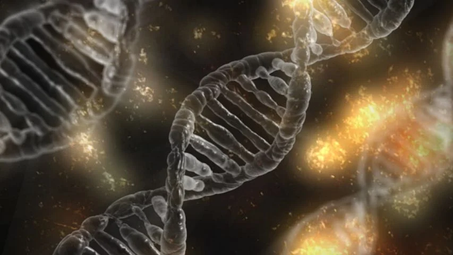A person’s genomic data is valuable to pharma and biotech companies who can use it to develop new drugs and reduce the costs of clinical trials. o There’s no reason why individuals shouldn’t be rewarded for the part they play, which is why Nebula will let individuals realize an economic benefit from sharing their information.
However, for the humanity to enter the genomics age we need your participation. Perhaps you want to discover if there is something immediately actionable you can do for your own or your family’s health. Perhaps you’re just curious to learn more about the genetic code that defines many aspects of who you are. Perhaps you want to help the world. Whatever the reason, joining us in our journey will accelerate the beginning of the genomics age and a future we will soon find we can’t live without.

What else can I help you with?
What is a single strand of DNA used for DNA testing called?
A single strand of DNA used for DNA testing is called PCR
Can a sample of blood from a piece of clothing be use for DNA testing?
Yes, a sample of blood from a piece of clothing can be used for DNA testing. The DNA extracted from the blood can be compared to known DNA samples to help identify a person or provide information about their biological relationships.
How is a DNA molecule labeled for identification in genetic testing?
In genetic testing, a DNA molecule is labeled for identification using a process called DNA sequencing. This involves determining the order of nucleotides in the DNA molecule, which can then be used to uniquely identify it.
How do mtDNA and Y chromosomes test work?
MTDNA (mitochondrial DNA) testing analyzes DNA from the mitochondria, which is passed down from the mother to all of her children. This type of testing is used to trace maternal ancestry. In contrast, Y chromosome testing analyzes DNA from the Y chromosome, which is passed down from father to son. This type of testing is commonly used to trace paternal ancestry.
Can you extract DNA from ear wax?
Yes, it is possible to extract DNA from ear wax as it contains skin cells that can be used for genetic testing.
Common uses for DNA testing?
DNA testing is used to identify things.
What is a single strand of DNA used for DNA testing called?
A single strand of DNA used for DNA testing is called PCR
Can a toothbrush be used for DNA testing?
Yes, a toothbrush can be used for DNA testing. DNA can be collected from the bristles of the toothbrush used by an individual and sent to a lab for analysis. This can be useful in situations where other sources of DNA are not available.
How does DNA evidence help in investigations?
It's important to remember that what you see on television isn't accurate to how DNA works in real life. Here are a few sites where you can read up on the differences between TV and real life DNA testing use: http://www.portlandtribune.com/news/story.php?story_id=122671590561640000 and http://news.nationalgeographic.com/news/2004/09/0923_040923_csi.html
When was saliva first used for DNA paternity testing?
Saliva was first used for DNA paternity testing in the early 1990s. Prior to that, blood samples were the primary source for DNA testing. The development of more advanced DNA analysis techniques allowed for the use of non-invasive samples like saliva, making paternity testing more accessible and convenient. This shift contributed to the widespread adoption of DNA testing in paternity cases.
Name two common uses for DNA testing?
DNA fingerprinting, and testing for alleles.
Can hair be used for ancestry DNA?
Yes, hair can sometimes be used for ancestry DNA testing as it contains DNA material. However, it is not the most recommended source as it may not provide sufficient DNA for accurate testing due to potential contamination and degradation. Saliva or cheek swab samples are generally more reliable for ancestry DNA testing.
How DNA use in real life?
DNA has many uses in real life. These uses may include use as evidence in a crime scene for example
Can a grandmother be used to get DNA testing for a grandchild?
Yes. But her genes would be less in common than with either parent. Better would be mitochondrial DNA testing.
Can a sample of blood from a piece of clothing be use for DNA testing?
Yes, a sample of blood from a piece of clothing can be used for DNA testing. The DNA extracted from the blood can be compared to known DNA samples to help identify a person or provide information about their biological relationships.
How is a DNA molecule labeled for identification in genetic testing?
In genetic testing, a DNA molecule is labeled for identification using a process called DNA sequencing. This involves determining the order of nucleotides in the DNA molecule, which can then be used to uniquely identify it.
What are the producers of DNA testing?
Genetic makers are the structural differences in DNA that are the producers of the DNA testing.
